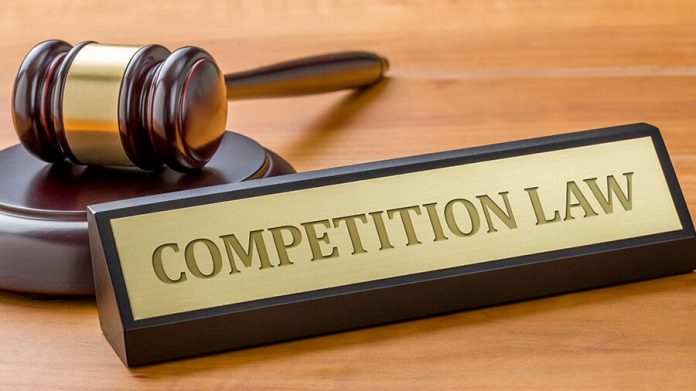This article is written by Priyanshi Soni, a student of Symbiosis Law School, Noida. This article seeks to understand and analyze the physician’s prescription under the Competition Law lens.
Table of Contents
Introduction
It would not be wrong to say that since there are so many doctors in India, the medical industry lives in good market conditions, where demand and supply checks can shield against market failures. But actually, there is a big difference in the bargaining power of the service provider and the end consumer. Now since deliverables are crucial, just like human life, the demand depends more on or is rather influenced more by the quality and not by price. This also makes the consumer vulnerable as the industry is very technical and information asymmetry is immense. The nature of India’s anti-trust laws i.e. the competition laws exacerbates the already existent knowledge asymmetry in the pharmaceutical industry.
Overview of Competition Law in India
Competition Law i.e. the Competition Act, 2002 was introduced in India to promote healthy competition between enterprises in the market, protect the interest of consumers, prevent activities that might have an appreciable adverse effect on competition (AAEC), and also ensure the freedom of traders. The Competition Commission of India is the statutory body established by the Government of India to enforce the Act, promote fair competition, and keep a check on AAEC.
While talking about competition regulatory systems the two most influential systems in the world are the competition law of the European Union and the anti-trust laws of the US.
In India, for 40 years, the Monopolies and Restrictive Trade Practices Act, 1969 (MRTP Act) existed. This Act did not allow the concentration of economic power in a few hands and so prohibited any monopolistic and restrictive trade practices. However, this Act did not apply to government companies and undertakings, and many others. These things made the Act very restricted and thus, to enlarge the scope of the legislation, the Competition Act, 2002 was passed by the Parliament in 2003.
About the Act
The Act contains provisions for anti-competitive agreements, abuse of dominant position, and combinations like acquisitions, mergers, etc. Anti-competitive agreements refer to the agreements made by two or more competitive companies in the same market that try to manipulate the market so as to make it favourable for them. This has reduced the competition and so, affected the companies and also the end consumers.
The Competition Act, 2002 defines anti-competitive agreements as such in section 3 where it states, “No enterprise or association of enterprises or individuals or association of individuals may agree to production, supply, distribution, storage, acquisition or control of goods or provision of services which may adversely affect the competition in the Indian market”. Such agreements are expressly void as they cause an adverse effect on competition agreements.
The inventor’s patent and the generic drugs : background
When an inventor invents any molecule/drug, he procures a patent for it. A patent is a right granted to the inventor that prevents others from making or selling the invention without his permission. It is granted for 20 years, subject to payment of annual renewal fees. This patent is allotted to him after undergoing proper clinical trials of the product. It is done so that he can recover the research and development investments so that he can use the profits to innovate again. Meanwhile, he sells the drugs under its brand name and at higher prices.
After the 20 year period is over, the Pharmaceutical Companies (PCs) sell the generic drugs in their chemical names as the crowd is already high. However, instead, PCs assign a proprietary name to these generic drugs and then eventually try to build a brand through promotions and advertisements.
Is there any difference between these two types of drugs – generic drugs and branded drugs?
The misconception
The drugs are pharmacologically similar. Both generic drugs and branded drugs have identical characteristics. They ought to undergo similar bio-equivalence tests and are equally effective. The difference lies only in the price – the price of generic drugs is usually less than that of branded drugs. Around 30 to 90% of the difference can be seen. For example, generic drug paracetamol costs Rs.1 for 1 tablet, and Crocin costs around Rs. 2 for 1 tablet. This way, the cheaper tablets/drugs deter the consumers as they assume that cheaper drugs would be effective quality-wise. This misconception of patients gets aggravated when the physician recommends them the branded drugs only reasoning that branded drugs are better in quality. Since the field is highly technical, patients become vulnerable and so go with what their physician prescribes.
By citing the better quality of branded drugs, the physicians violate Regulation 1.5 of the Indian Medical Council (Professional Conduct, Etiquette and Ethics) Regulations, 2002 (‘Ethics Code’), which mandates the doctors to prescribe the generic names of medicines.
However, the empirical study published on the website of the National Center for Biotechnology Information shows that generic drugs are as effective as branded ones and there is no big difference between the two. As a result of that study, 93% of generic and 87% branded drug users believed that their drugs were effective (P = 0.238) in controlling their ailments. No significant difference was observed in reported adverse effects between generic and branded drug users.
The antitrust problem
The real reason behind the prescription of branded drugs by the physicians is their vested interest in prescribing these drugs and not the quality of the drugs, as it is a proven fact that quality is the same. The truth is that generic drugs are as effective as branded ones, but the endorsements by PCs create an artificial difference between the two and the patients get attracted to the costlier drugs. Further, due to the patient’s consumption behaviour, the generic drug industry which is predominantly volume driven is unable to make profits. This is how such an equation forecloses rival competition thereby affecting consumer welfare and harming the weaker player.
The law attempts to address this, albeit in ineffective ways. The doctors are prohibited from receiving bribes from PCs under Ethics Code Clause 6.8. Furthermore, the Drug Technical Advisory Board (DTAB) has advised all pharmacies to display generic pharmaceuticals on separate shelves so that they are easily accessible to customers. However, this equates to treating symptoms rather than root causes.
The ex-post remedy
Section 3(4) in the Competition Act, 2002, which deals with agreements among enterprises or persons at different stages of production, also includes PCs and physicians who are at different stages in the same market environment and thus, interact.
The PCs offer incentives and persuade the physicians to prescribe the drugs manufactured by them, and this, in turn, leads to a promotion of their branded drugs. Patients themselves cannot make informed choices as they are subject to the asymmetry of information in this technical field. They only eventually rely on the physician’s advice.
Within the meaning of Section 3, this implies that there is an exchange of agreement between the PCs and the physicians to sell the agreed drugs. But such agreements might affect the consumers’ welfare. Section 3(4) of the Act states that in case such agreements affect the competition adversely, they will be termed as void and illegal, although it directly does not mention a presumption, unlike Section 3(3) does, we still should view such vertical agreements between physicians and pharma companies because the medical market is a peculiar market when viewed from the perspective of patient’s rights and consumer welfare. This is done by keeping in mind that one’s right to life cannot be subjected to derogations and all the other rights depend upon this right alone and that it is crucial.
Such stark inequality implies having ex-ante provisions and regulations of generic drugs instead of ex-post-facto remedies because remedy after the damage is already done, is of no use.
The gaps
A Uniform Code of Pharmaceutical Marketing and Practices (UPCMP) which was introduced in 2015 deals with the fact that any sort of a PC is prohibited from any sort of monetary or non-monetary exchange with physicians. But they seem to be violating this rule blatantly by offering monetary and non-monetary incentives to physicians, in turn, over-prescribing their drugs to the patients. But, the Code is non-binding and lenient. All complaints are reviewed by the Ethics Committee, which is made up of members of the pharmaceutical associations themselves. Even the power of evaluation is in the hands of the members of these organisations. However, a sector that has frequently broken the law is infamous for patient exploitation, and is intrinsically hyper-technical – has to be held accountable from the outside. Further, even the penalties include merely taking away the incentive, gifts, etc. from the physician. This kind of penalty is not a deterrent.
Conclusion and suggestions
A permanent solution to this whole problem is to hold the offerors liable instead of providing limited costs towards enforcing a code of conduct on physicians.
The antitrust laws should ensure that PCs are not given the opportunity to commit the violation, there is no intent to do the violation, and the law is deterrent, i.e., the predicted costs of the violation outweigh the advantages coming from it.
The problem with the present code is that it gives PCs a chance to commit a violation of rules as they have the capital to bribe the physicians and due to lack of enforceability, the cost of violation is also nil.
As a result, it is proposed that UPCMP be made required and a deterrent to the extent that the costs of violation outweigh the benefits derived from it. Thus, it will serve as efficient ex-ante treatment. Such issues of gaps in the pharmaceutical industry are the result of poverty and illiteracy mainly. The state should take a closer look at such arrangements between PCs and physicians and put a stop to them before they cause big problems in near future.
References
- https://www.livelaw.in/columns/competition-law-parsing-the-physicians-prescription-176510?infinitescroll=1
- https://www.ncbi.nlm.nih.gov/pmc/articles/PMC5320819/
- https://www.mondaq.com/india/trade-regulation-practices/1091220/overview-of-the-anti-trust-regime-in-india-from-a-contractual-perspective
- https://cleartax.in/s/competition-act-2002
- http://www.medlineindia.com/acts/medical%20ethics/code_of_ethical_regulations.html
Students of Lawsikho courses regularly produce writing assignments and work on practical exercises as a part of their coursework and develop themselves in real-life practical skills.
LawSikho has created a telegram group for exchanging legal knowledge, referrals, and various opportunities. You can click on this link and join:
https://t.me/joinchat/J_0YrBa4IBSHdpuTfQO_sA
Follow us on Instagram and subscribe to our YouTube channel for more amazing legal content.
 Serato DJ Crack 2025Serato DJ PRO Crack
Serato DJ Crack 2025Serato DJ PRO Crack











 Allow notifications
Allow notifications



